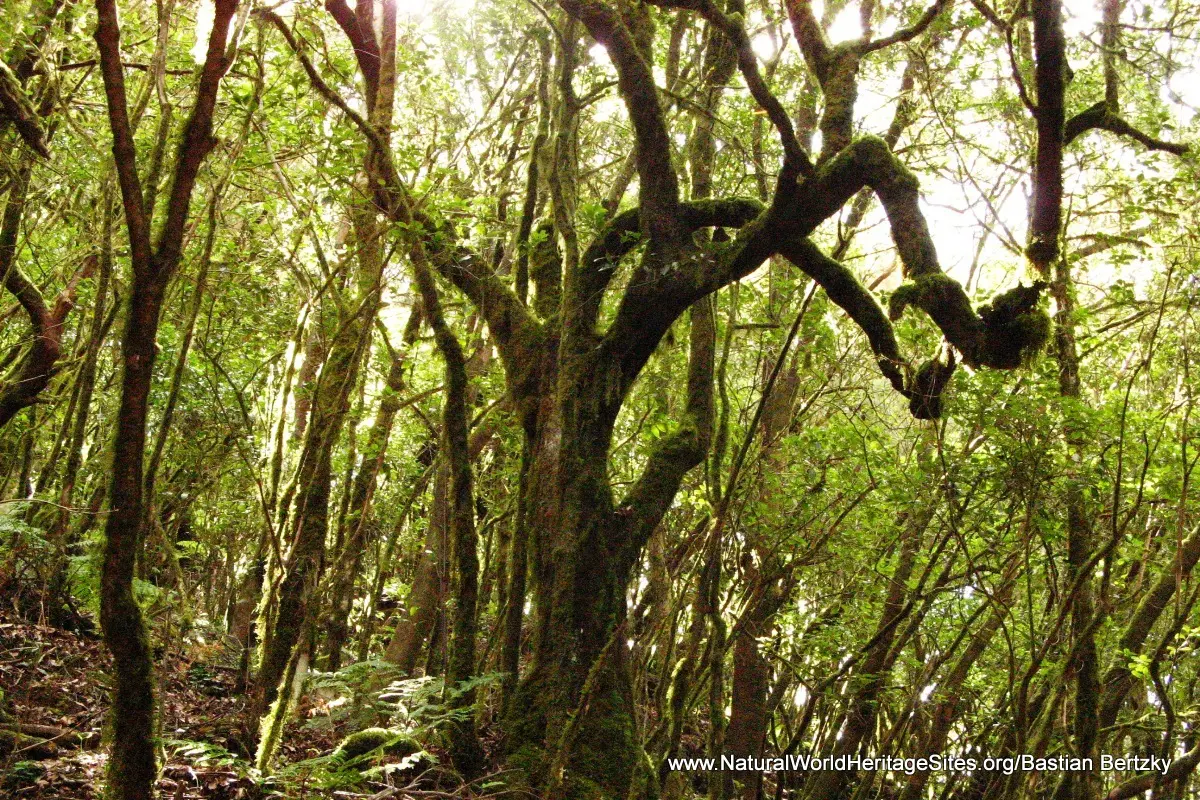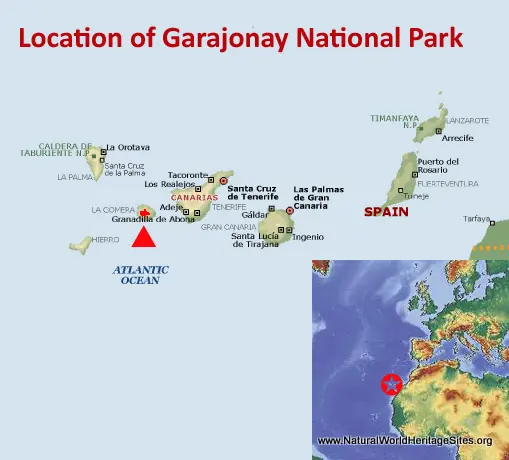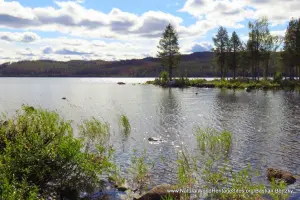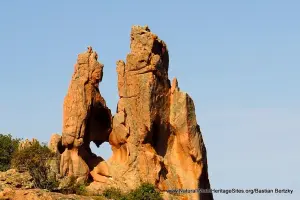EXPLORE Garajonay National Park with this slideshow, check the location map and get all the facts and information below.
For slideshow description see right or scroll down (mobile). Click to view slideshow
Location and Values: Garajonay National Park is located in the highlands of La Gomera, one of the seven islands that make up Spain’s Canary Island archipelago in the eastern Atlantic. Most of the park is covered in laurel forest (laurisilva), a rare living example of a type of evergreen vegetation that once extended over much of Europe and North Africa, but now survives as a scattering of remnant patches on some of the Macaronesian Islands (another example is the Laurisilva of Madeira, also designated as world heritage). The survival of this relict ecosystem, dating back to the Tertiary period, is considered an ‘exceptional natural phenomenon’. It is the result of unusual climatic conditions producing a sea of fog in the highlands of these otherwise hot, dry islands that ensures the high humidity and mild temperatures required to sustain the forest.
The laurel forest of Garajonay National Park is also outstanding in evolutionary terms, supporting an exceptionally large number of relict and endemic species of plants and animals not found elsewhere. Thirty four of the park’s 450 vascular plant species are endemic to the island of La Gomera, with eight of them found only within the national park. The laurel forest supports two endemic species of pigeon and about half the invertebrate fauna is found nowhere else.
Conservation Status and Prospects. According to IUCN’s Conservation Outlook Assessment (2017) the conservation status of Garajonay National Park is ‘of significant concern’. The IUCN report notes the importance of Garajonay National Park in protecting the largest remnant of Laurel forest in the Canary Islands after centuries of human impact from logging, firewood and charcoal production, clearing and degradation. The report highlights the threat of fire and the significance of a catastrophic fire in 2012 which raged for almost three months with devastating effect on the forest. Recovery is possible in the long-term, but the possibility of further fires remains a major concern. The fire risk is exacerbated by tourism activities, the spread of alien invasive species and a warming climate (which, amongst other things, is expected to increase the altitude of cloud formation and reduce humidity in the forest). The IUCN report also notes that various subtypes of laurel forest on the island of La Gomera are not yet represented in the site and it would be beneficial to extend it to include adjacent areas of high conservation value.
Links:
Google Earth
Official UNESCO Site Details
IUCN Conservation Outlook
UNEP-WCMC Site Description
Birdlife IBA
Slideshow description
The slideshow ‘tells the story’ of Garajonay National Park with a short portfolio of photos by Bastian Bertzky from a visit in October 2007. They illustrate the landscape features of this outstanding place, the moist forest interior and some of the typical plants. A map of the park from a visitor information panel illustrates the land use and protection status of adjacent areas in the wider landscape around the park.
Factfile
Website Category:
Temperate & Boreal Forests; Islands
Area: 40 km2
Inscribed: 1986
Criteria:
- Exceptional natural phenomenon (vii);
- Ecological processes (ix);





